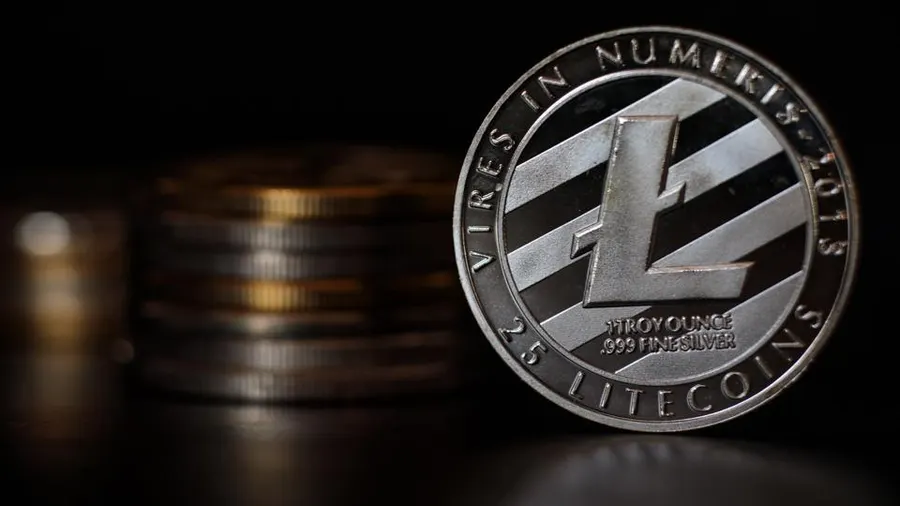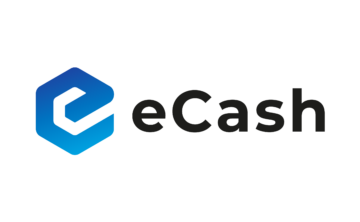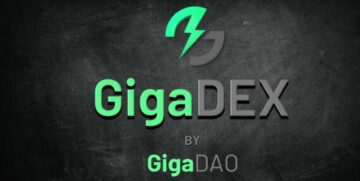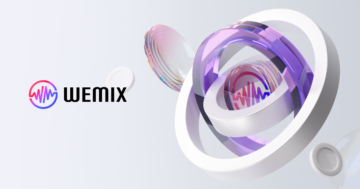
Litecoin, often hailed as the silver to Bitcoin’s gold, stands as a prominent figure in the ever-evolving landscape of cryptocurrencies. Created by Charlie Lee, a former Google engineer and MIT graduate, Litecoin emerged onto the digital currency scene as a direct response to some of Bitcoin’s limitations.
Since its inception in 2011, Litecoin has not only mirrored the foundational principles of Bitcoin but has also introduced its own innovations, such as faster transaction speeds and a greater number of coins. This guide delves into the world of Litecoin, exploring its origins, the mechanics of mining LTC, the significance of halving events in its economy, and how it differentiates itself from its predecessor, Bitcoin.
Background of Litecoin
Litecoin, a notable cryptocurrency in the digital finance landscape, was the brainchild of Charlie Lee, a Massachusetts Institute of Technology graduate and former Google engineer. Lee’s journey into the world of cryptocurrency began in 2011, and his deepening interest in Bitcoin eventually led him to create Litecoin. In 2013, he joined the cryptocurrency exchange Coinbase as director of engineering, putting Litecoin’s development on hold to focus on promoting Bitcoin adoption, as he believed Litecoin was not yet ready for significant growth.
In late 2017, Lee left Coinbase to devote his efforts to Litecoin’s development full-time, taking up the role of managing director at the Litecoin Foundation, a non-profit organization committed to supporting Litecoin. In a move that sparked controversy, Lee sold and donated all his LTC holdings in December 2017 amid accusations of personal gain from his tweets about the cryptocurrency, which at the time was trading at an all-time high of around $350.
Litecoin’s inception stemmed from Lee’s desire to create a digital currency complementary to Bitcoin. Announced in October 2011 on the Bitcointalk forum, Lee envisioned Litecoin as the “silver to Bitcoin’s gold.” It originated as a fork of the Bitcoin blockchain, initially a side project that evolved into something more significant. Litecoin distinguished itself through several innovations, such as faster block propagation speeds and the adoption of the Scrypt hashing algorithm. Importantly, the network largely avoided premining, a practice common in other cryptocurrencies where developers mine coins before public release, to ensure a fairer launch akin to Bitcoin’s.
Despite a minor premine of 150 LTC to test and validate the genesis block, Litecoin’s launch was designed to be equitable. Lee released its source code and binary a week before the official launch, allowing for public testing. The launch time was decided via a poll on the Bitcointalk forum to enable simultaneous mining starts for all interested parties. Initially, mining a block rewarded 50 LTC, which held little value at the time, underscoring the project’s humble beginnings and commitment to fair distribution.
What is Litecoin?
Litecoin, symbolized as $LTC, is a digital currency that operates independently of any centralized financial authority. At its core, Litecoin harnesses the power of blockchain technology, a decentralized ledger system, to process and securely record transactions. This technology involves creating continuous chains of information blocks, which collectively form the Litecoin blockchain.
The process of maintaining and expanding the Litecoin blockchain is undertaken by miners. These individuals utilize significant computing power to solve complex mathematical problems. Successfully solving these problems grants miners the right to verify and add transactions to the blockchain, thereby creating new blocks. In return for their crucial role in maintaining the network’s integrity and facilitating transaction processing, Litecoin miners are rewarded with Litecoin.
As a currency, LTC offers versatility in its use. It can be traded or sold like other cryptocurrencies, and it also functions as a medium of exchange for purchases. A growing number of merchants accept $LTC, making it a practical and increasingly popular option for digital transactions.
Litecoin vs Bitcoin
While Litecoin and Bitcoin share many characteristics as cryptocurrencies, they also have several key differences that distinguish them from one another.
Transaction Speed
One of the primary differences lies in transaction speed. Despite requiring more advanced technology for mining, Litecoin generates blocks up to four times faster than Bitcoin. This increased speed not only allows for quicker financial transaction processing but also enables Litecoin to handle a greater volume of transactions over the same time frame compared to Bitcoin.
Number of Coins
Another notable difference is in the total number of coins each cryptocurrency has in circulation. Bitcoin’s supply is capped at 21 million coins, whereas Litecoin quadruples this number with a cap of 84 million coins. This higher number of coins is one of the defining features of the cryptocurrency.
Market Cap
In terms of market capitalization, Litecoin has a smaller footprint compared to Bitcoin. Despite this, Litecoin remains one of the most actively traded cryptocurrencies in the market, holding a significant position in the digital currency ecosystem.
Mining Algorithms
The mining processes of Litecoin and Bitcoin are based on different algorithms. Litecoin utilizes the Scrypt mining algorithm, while Bitcoin uses the SHA-256 algorithm. The Litecoin team initially chose Scrypt to prevent mining dominance by ASIC (Application-Specific Integrated Circuit)-based miners, thereby allowing CPU and GPU miners to remain competitive. Scrypt is more memory-intensive, which initially posed a challenge for ASIC miners. However, over time, ASIC miners capable of handling Scrypt have been developed, making CPU and GPU mining tools less viable due to their comparatively lower computational power. ASICs now dominate Litecoin mining, significantly increasing the hashes generated per second.
These distinctions between Litecoin and Bitcoin highlight the unique attributes and functionalities of each, contributing to their individual roles and reputations within the broader cryptocurrency landscape.
How to Mine $LTC
Mining Litecoin (LTC) involves certain considerations and decisions, especially regarding the type of hardware and mining approach to use.
Choosing the Right Equipment
For Litecoin mining, ASIC (Application-Specific Integrated Circuit) machines are commonly used. These specialized devices come pre-installed with mining software tailored for LTC mining. On the other hand, if you opt for mining with a central processing unit (CPU) or graphical processing unit (GPU), you will need to select appropriate mining software. It’s crucial to choose software from reliable sources, as there is a risk of malware and other malicious activities with untrusted software products.
Solo vs. Pool Mining
Once the mining setup is ready, the next decision is whether to mine solo or join a mining pool. Solo mining poses the challenge of potentially long intervals without discovering a block. However, the reward for finding a block while solo mining is substantial – you receive the entire 25 Litecoin reward plus transaction fees. This approach is feasible mainly if you possess significant hash power, typically achievable with multiple ASICs.
Conversely, solo mining with just a CPU or GPU is almost impractical in terms of earning potential due to their limited computational power. Pool mining, where miners combine their computational resources, offers a more viable option. In a mining pool, rewards are distributed among participants proportionally to the hash power each miner contributes. While the individual payout in pool mining is smaller compared to solo mining, the chances of earning a consistent reward are significantly higher, making it a preferred choice for many miners.
Litecoin Halving
In the world of Litecoin (LTC), ‘halving’ is a significant event that directly impacts the creation of new coins and the rewards miners receive. Halving refers to the process of reducing the reward for mining a new block by half. This mechanism is designed to control the rate of new Litecoin entering circulation, thus contributing to the cryptocurrency’s scarcity and long-term value.
Historical and Future Halving Events
Litecoin has undergone several halving events since its inception, each reducing the mining reward by 50%. Here is a timeline of past and anticipated halving events for LTC:
- First Halving – August 25, 2015: The reward for mining a Litecoin block was halved from 50 LTC to 25 LTC.
- Second Halving – August 5, 2019: This event saw the mining reward decrease from 25 LTC to 12.5 LTC.
- Third Halving – August 2, 2023: The upcoming halving is expected to reduce the reward from 12.5 LTC to 6.25 LTC.
- Fourth Halving – Projected for July 2027*: In this future event, the reward is anticipated to be halved again from 6.25 LTC to 3.125 LTC.
Conclusion
Litecoin’s journey from a Bitcoin fork to a fully-fledged digital currency in its own right is a testament to the dynamic nature of the cryptocurrency world. With its faster transaction speeds, increased coin supply, and regular halving events, Litecoin has carved out a niche that complements Bitcoin’s market dominance.
As we look to the future, Litecoin’s adaptability and resilience suggest it will continue to be a key player in the cryptocurrency space. Whether for transactions, mining, or investment, Litecoin offers a blend of stability and innovation, making it a valuable asset in the diverse ecosystem of digital currencies.
- SEO Powered Content & PR Distribution. Get Amplified Today.
- PlatoData.Network Vertical Generative Ai. Empower Yourself. Access Here.
- PlatoAiStream. Web3 Intelligence. Knowledge Amplified. Access Here.
- PlatoESG. Carbon, CleanTech, Energy, Environment, Solar, Waste Management. Access Here.
- PlatoHealth. Biotech and Clinical Trials Intelligence. Access Here.
- Source: https://www.asiacryptotoday.com/litecoin/
- :has
- :is
- :not
- :where
- $UP
- 12
- 125
- 150
- 2011
- 2013
- 2015
- 2017
- 2019
- 2023
- 25
- 50
- 84
- a
- About
- Accept
- Accusations
- achievable
- actively
- activities
- adaptability
- add
- Adoption
- advanced
- Advanced Technology
- again
- algorithm
- algorithms
- All
- Allowing
- allows
- almost
- also
- Amid
- among
- an
- and
- announced
- Another
- Anticipated
- any
- approach
- appropriate
- ARE
- around
- AS
- asia
- Asia Crypto Today
- asic
- asic miners
- Asics
- asset
- At
- attributes
- AUGUST
- August 2
- authority
- avoided
- based
- BE
- been
- before
- began
- believed
- between
- Bitcoin
- bitcoin adoption
- Bitcoin Blockchain
- Bitcointalk
- Blend
- Block
- blockchain
- blockchain technology
- Blocks
- broader
- but
- by
- CAN
- cap
- capable
- capitalization
- carved
- central
- centralized
- certain
- chains
- challenge
- chances
- characteristics
- Charlie
- Charlie Lee
- choice
- Choose
- chose
- Circulation
- code
- Coin
- coinbase
- Coins
- collectively
- combine
- come
- commitment
- committed
- Common
- commonly
- comparatively
- compared
- competitive
- complementary
- complex
- computational
- computational power
- computing
- computing power
- conclusion
- considerations
- consistent
- continue
- continuous
- contributes
- contributing
- control
- controversy
- Core
- CPU
- create
- created
- Creating
- creation
- crucial
- crypto
- cryptocurrencies
- cryptocurrency
- Cryptocurrency Exchange
- currencies
- Currency
- December
- decentralized
- decided
- decision
- decisions
- decrease
- defining
- designed
- desire
- Despite
- developed
- developers
- Development
- Devices
- difference
- differences
- different
- digital
- digital currencies
- digital currency
- digital finance
- digital transactions
- direct
- directly
- Director
- discovering
- distinguish
- Distinguished
- distributed
- distribution
- diverse
- Dominance
- dominate
- donated
- due
- dynamic
- each
- Earning
- economy
- ecosystem
- efforts
- emerged
- enable
- enables
- end
- engineer
- Engineering
- ensure
- entering
- Entire
- envisioned
- equitable
- especially
- Event
- events
- eventually
- evolved
- exchange
- expanding
- expected
- Exploring
- facilitating
- fair
- fairer
- faster
- feasible
- Features
- Fees
- Figure
- finance
- financial
- finding
- Focus
- Footprint
- For
- fork
- form
- Former
- Forum
- Foundation
- foundational
- four
- FRAME
- from
- functionalities
- functions
- future
- Gain
- generated
- generates
- Genesis
- Gold
- GPU
- GPU mining
- graduate
- grants
- greater
- Growing
- Growth
- guide
- Half
- halved
- Halving
- hand
- handle
- Handling
- Hardware
- harnesses
- hash
- hash power
- hashing
- Have
- he
- Held
- here
- High
- higher
- Highlight
- him
- his
- hold
- holding
- Holdings
- How
- However
- HTTPS
- humble
- if
- Impacts
- importantly
- in
- In other
- inception
- increased
- increasing
- increasingly
- independently
- individual
- individuals
- information
- initially
- Innovation
- innovations
- Institute
- integrated
- integrity
- interest
- interested
- into
- introduced
- investment
- involves
- IT
- ITS
- itself
- join
- joined
- journey
- July
- just
- Key
- landscape
- largely
- Late
- launch
- Led
- Ledger
- Lee
- left
- less
- lies
- like
- limitations
- Limited
- Litecoin
- Litecoin (LTC)
- Litecoin Foundation
- little
- Long
- long-term
- Look
- lower
- LTC
- LTC mining
- Machines
- mainly
- maintaining
- Making
- malware
- managing
- Managing Director
- many
- Market
- Market Capitalization
- Market Dominance
- massachusetts
- Massachusetts Institute of technology
- mathematical
- mechanics
- mechanism
- medium
- medium of exchange
- Merchants
- million
- mine
- miner
- Miners
- Mining
- mining pool
- Mining Software
- minor
- MIT
- MIT graduate
- more
- most
- move
- multiple
- Nature
- Need
- network
- New
- next
- niche
- non-profit
- non-profit organization
- notable
- now
- number
- october
- of
- Offers
- official
- often
- on
- ONE
- only
- onto
- operates
- Option
- or
- organization
- originated
- origins
- Other
- out
- over
- own
- participants
- parties
- past
- per
- personal
- plato
- Plato Data Intelligence
- PlatoData
- player
- plus
- poll
- pool
- Popular
- posed
- poses
- position
- possess
- potential
- potentially
- power
- Practical
- practice
- predecessor
- preferred
- prevent
- primary
- principles
- problems
- process
- processes
- processing
- Products
- project
- projected
- projects
- prominent
- promoting
- propagation
- public
- purchases
- Putting
- quicker
- Rate
- ready
- receive
- record
- reduce
- reducing
- refers
- regarding
- regular
- release
- released
- reliable
- reliable sources
- remain
- remains
- resilience
- Resources
- response
- return
- Reward
- rewarded
- Rewards
- right
- Risk
- Role
- roles
- same
- saw
- Scarcity
- scene
- Scrypt
- Second
- securely
- select
- setup
- several
- Share
- side
- significance
- significant
- significantly
- Silver
- simultaneous
- since
- smaller
- Software
- sold
- solo
- solo mining
- SOLVE
- Solving
- some
- something
- Source
- source code
- Sources
- Space
- sparked
- specialized
- speed
- speeds
- Stability
- stands
- starts
- stemmed
- substantial
- Successfully
- such
- suggest
- supply
- Supporting
- system
- tailored
- taking
- team
- Technology
- terms
- test
- testament
- Testing
- than
- that
- The
- The Future
- the world
- their
- Them
- theme
- There.
- thereby
- These
- they
- this
- Through
- Thus
- time
- timeline
- times
- to
- today
- tools
- Total
- traded
- Trading
- transaction
- Transaction Fees
- transaction speed
- transaction speeds
- Transactions
- tweets
- type
- typically
- undergone
- unique
- unit
- upcoming
- use
- used
- uses
- utilize
- utilizes
- VALIDATE
- Valuable
- value
- verify
- versatility
- via
- viable
- volume
- vs
- was
- we
- webp
- week
- What
- What is
- whereas
- whether
- which
- while
- will
- with
- within
- without
- world
- yet
- you
- zephyrnet









